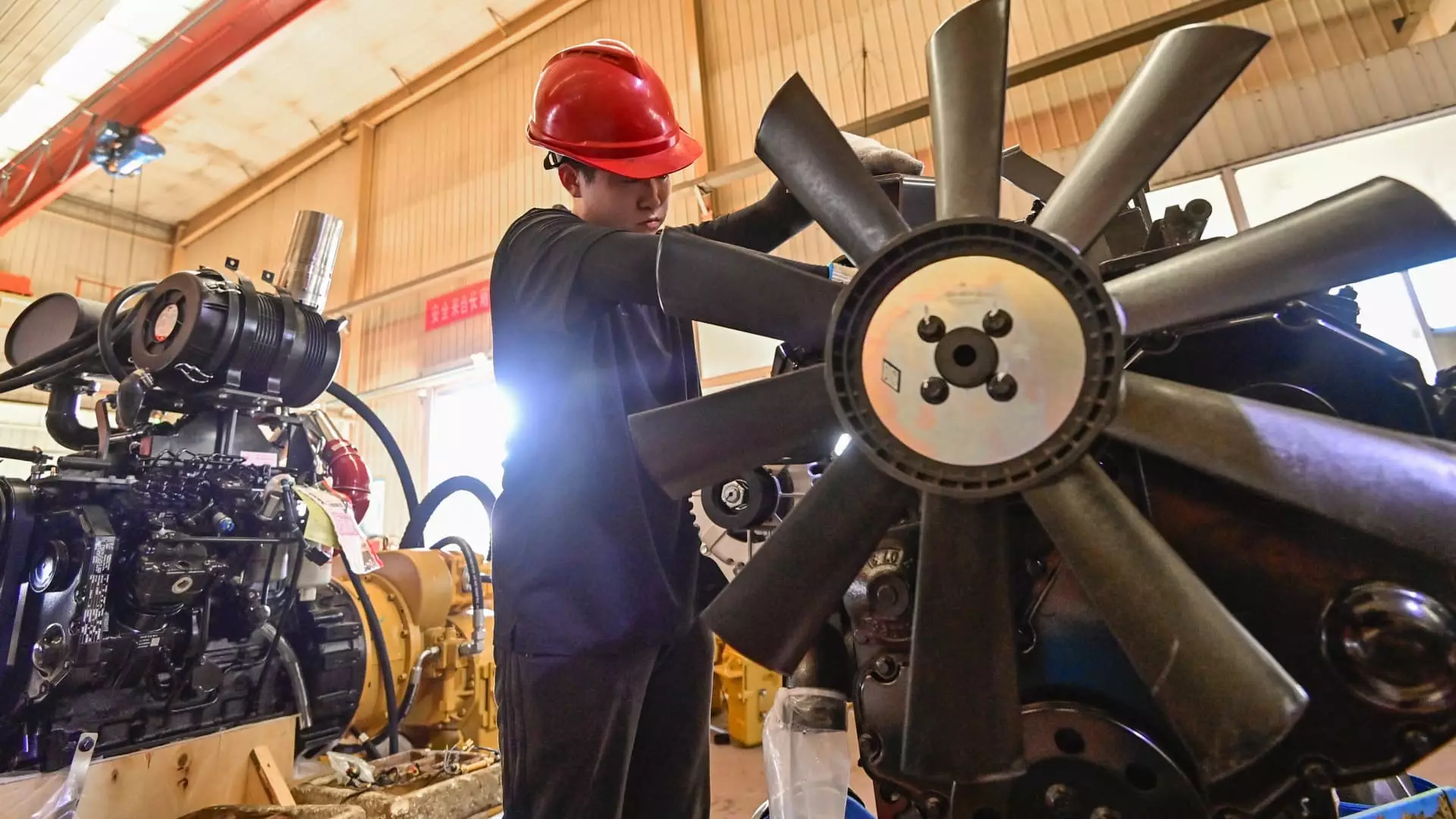China’s manufacturing sector has demonstrated signs of revitalization, as indicated by the latest findings from a private survey released in October. The Caixin/S&P Global Manufacturing Purchasing Managers’ Index (PMI) ascended to 50.3, surpassing market predictions and showing a marked improvement over the previous month’s reading of 49.3. This article delves into the implications of this data, examining the contributing factors, context, and broader economic landscape.
The PMI is a crucial economic indicator that gauges the health of the manufacturing sector. A reading above 50 denotes growth, while a score below signifies contraction. The Caixin survey is particularly enlightening, as it predominantly reflects the performance of smaller, private manufacturers compared to the official PMI data, which emphasizes larger state-owned enterprises. This dichotomy underscores the nuanced challenges faced by different segments within China’s manufacturing ecosystem.
The jump to 50.3 in October indicates that smaller manufacturers are bouncing back, highlighting a potential recovery in market dynamics. However, it’s essential to scrutinize the implications of these figures rather than accept them at face value. While a shift above 50 suggests expansion, the mere numeric increase does not guarantee sustained growth or recoverable momentum in the larger economic picture.
Several aspects contribute to the optimistic PMI reading for October. According to Wang Zhe, a senior economist at Caixin Insight Group, both supply and demand have expanded, signaling a recovery in market consumption and production supporting this growth. The report noted a significant uptick in new orders, reflecting a vibrant underlying demand. This resurgence can be attributed to proactive initiatives by manufacturers and strategic business developments aimed at cultivating new client relationships.
However, it is crucial to consider the partial nature of this recovery. Notably, while domestic demand appears to be stabilizing, the export component remains a concern. The decline in export orders persists, albeit at a reduced pace, indicating ongoing challenges in the international market landscape. The specter of global economic uncertainties — shaped by events like the impending U.S. elections and increasing reports of protectionism worldwide — looms large over China’s manufacturing ambitions.
China’s central bank and government apparatus have recently implemented various measures aimed at stimulating economic activity. The reduction of the reserve requirement ratio (RRR) and adjustments made to the reverse repurchase rate are indicative of an aggressive monetary policy stance designed to enhance liquidity and encourage lending. These strategies are expected to boost domestic spending and, by extension, manufacturing output.
Despite the positive immediate effects of these stimulus measures, skeptics argue the actions represent just the beginning. Andy Maynard from China Renaissance describes this as “early stage” revitalization and emphasizes the need for ongoing monitoring of subsequent data. The effective execution and sustained impact of government interventions remain critical for long-term recovery.
China’s manufacturing sector faces numerous hurdles, including intense domestic competition and an industrial utilization rate that lingers below historical averages. These factors indicate that while the PMI offers a glimmer of hope, the road ahead is fraught with challenges that could derail potential growth.
Conversely, there are also opportunities amid these challenges. The government’s commitment to pro-growth initiatives and economic recovery signals a shift towards more collaborative and strategic economic management. Gary Ng from Natixis articulated an optimistic view, suggesting that a well-structured government approach could restore confidence and cultivate a more robust demand environment.
While the October PMI reading can be perceived as an encouraging sign of recovery in China’s manufacturing sector, it is but one data point in a broader, more complex economic narrative. The interplay between domestic demand, global market conditions, the impact of stimulus measures, and the challenges posed by international relations will significantly shape the trajectory of China’s economic recovery. As policymakers and economic stakeholders closely observe the upcoming parliamentary sessions for fiscal stimulus announcements, the manufacturing sector must navigate these multifaceted challenges while striving to harness emerging opportunities. The clarity and effectiveness of future policies will ultimately dictate whether the recent uptick in manufacturing activity can evolve into sustained economic growth.

Leave a Reply